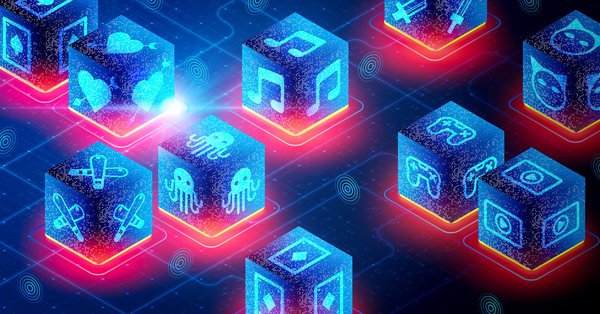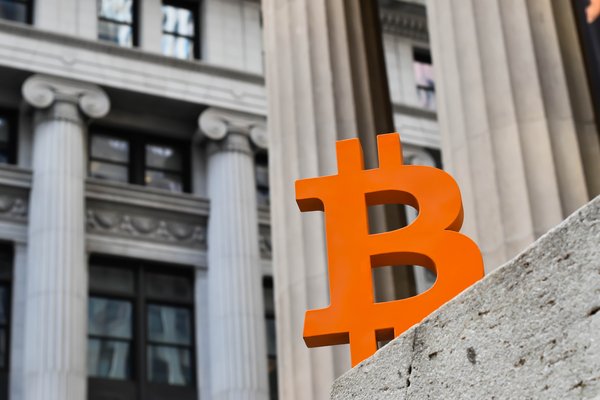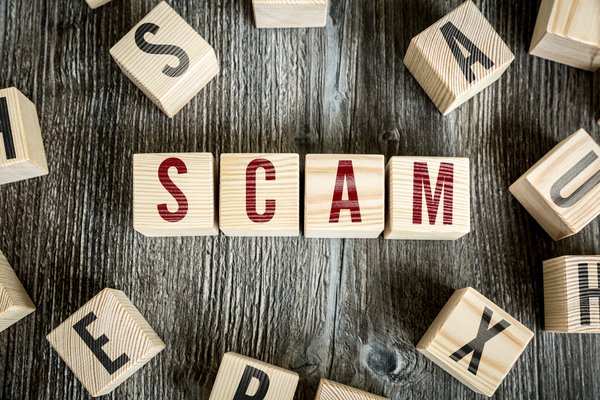EOS (CRYPTO:EOS) is the native cryptocurrency for the EOS blockchain, which is part of a larger EOSIO blockchain platform. EOSIO has smart contract functionality and makes it easy for developers to launch their own decentralized apps (dApps).

There have been plenty of cryptocurrency hype trains, but EOS is in a class of its own. Its record-setting initial coin offering (ICO) raised more than $4 billion in 2018. The years since then haven't been so kind; even the CEO of the EOS Foundation has referred to EOS as a failure.
Despite its issues, EOS is still an active project and has some areas where it excels compared to the competition. Keep reading to learn more about EOS and where it stands as an investment.
What makes EOS unique?
The most interesting part of EOS is that its entire EOSIO blockchain platform offers feeless transactions. The network covers the transaction costs through inflation of EOS tokens.
EOSIO is a smart contract blockchain. Smart contracts are programs run by a blockchain, and they enable developers to create decentralized projects on the entire EOSIO ecosystem.
Smart contract functionality isn't exactly special these days. Many blockchains can do it, with Ethereum (CRYPTO:ETH) being the first and most famous example. But, in addition to its feeless transactions, EOSIO has a few other features that make it special:
- It's fast, making it a scalable blockchain network. EOSIO has been able to handle about 4,000 transactions per second, and it takes less than a second to create a new block of transactions.
- It's structured like the operating system of a computer, with the aim of being easy to use for developers.
- It uses C++ for its smart contract programming language. Although some critics don't believe this is an appropriate choice for smart contracts, it allows C++ developers to use EOS without needing to learn anything new.
Overall, EOSIO is one of the more developer-friendly blockchain networks. Its website also has training and certification programs available that teach users about EOSIO's features, as well as smart contract and application development on its blockchains.
In April 2022, the EOS Network Foundation announced the release of an Ethereum Virtual Machine (EVM) on the EOS network. The "Trust EVM" will support Ethereum-compatible smart contracts to run on EOS and allow tokens to be moved between EOS and Ethereum. Trust EVM is said to be faster than many other Ethereum Virtual Machines, offering more than 10,000 transactions per second.
Where EOS came from
Block.one, a blockchain software company, started working on EOSIO in 2017. Former CTO Daniel Larimer led development, and CEO Brendan Blumer was also one of the authors of the project's white paper. EOSIO was released as open-source software on June 1, 2018.
To raise money during development, Block.one ran a year-long ICO. It was incredibly successful, raising $4.2 billion, more than twice as much as any other ICO had managed.
University of Texas researchers claimed in 2021 that Ethereum and EOS were recycled during the ICO, and that this wash-trading pumped up the price of EOS. Block.one was sued multiple times over the issue. The U.S. Securities and Exchange Commission charged Block.one with conducting an unregistered ICO, and the blockchain company paid $24 million in 2019 to settle the case. A class-action lawsuit for improper conduct was filed against Block.one in 2020; that case was settled for $27.5 million.
After the class-action suit was settled in 2021, EOS contributors forged a new path independent of Block.one. The EOS Network Foundation was formed in November 2021, and, in December, the EOS community voted to halt the vesting of previously planned EOS token distributions to Block.one. In March 2022, the EOS Network Foundation announced a technical "revitalization plan" for the EOS network, assisted by company Object Computing, which has contributed to EOSIO development in the past.
How EOS works
EOSIO is an open-source blockchain platform with a transaction-layer infrastructure and programmable smart contracts. It's essentially a secure, flexible framework. EOS is its own independent blockchain network built on that EOSIO framework.
The EOSIO platform has three resources it uses to process transactions and power dApps:
- RAM: This is memory/storage space. Contracts that need to store data can do so in the blockchain's RAM.
- CPU: This provides processing power. CPU bandwidth is the amount of processing time a blockchain account has at its disposal.
- NET: The network’s bandwidth, which is measured as the byte size of transactions, so sufficient NET is required to complete transactions.
To use EOSIO, developers must purchase these resources using EOS tokens. RAM can be bought and sold, but CPU and NET work a little differently. For those, you only need to stake your EOS tokens, meaning you pledge them as collateral. When you want to get your EOS tokens back, you can return the CPU and NET.
The EOS blockchain network processes transactions using a delegated proof-of-stake system. EOS token holders can stake their tokens and then vote on a Block Producer. The 21 Block Producers with the most EOS tokens behind them are chosen to validate transactions.
Users don't need to pay transaction fees on EOS or EOSIO. The only requirement to use the networks is staking EOS tokens, which enables you to make feeless transactions.
Partnerships
A variety of projects have been developed on EOSIO, although most of them are on the smaller side compared to work on other blockchains. Here are a few examples of what developers have built on EOSIO:
- Upland, a blockchain game, uses EOSIO's architecture to operate smoothly and introduce new features such as non-fungible tokens (NFTs) and micro-commerce transactions.
- OmniOne, a decentralized identity service, chose to build on EOSIO due to its scalability.
- Chainflux, a blockchain development company, created its SHINE blockchain by modifying the EOSIO codebase.
- Ultra, a game distribution platform, picked EOSIO because it uses the same C++ programming language that's commonly used in the gaming industry.
In April 2022, the EOS Network Foundation announced its partnership in a coalition of blockchains that will collectively support the EOSIO core protocol. Other participating blockchains include Telos, WAX, and UX Network.
Unique risks
EOS is a perfect example of the danger of investing in ICOs. It raised billions before even launching a product. Since then, it has been plagued by various issues. Many early investors saw the value of their EOS tokens plummet.
During EOS's formative years, some expressed concerns that EOS token ownership and network control were too centralized. Those concerns are lower now that Block.one is less involved.
The people in charge of EOS are also able to reverse transactions. In 2018, controversy arose when an EOS arbitrator reversed transactions that were already confirmed. For the many crypto enthusiasts who believe in the value of decentralization, the fact that EOS could modify transactions was a major strike against it.
A more recent issue is the power struggle between Block.one and the EOS Foundation, which was formed in August 2021. In November of that year, EOS Foundation CEO Yves La Rose said EOS “as it stands is a failure," and that the consensus among token holders is that, "Block.one knowingly misrepresented their capabilities, and this amounts to negligence and fraud."
Related investing topics
Is EOS a good investment?
Considering all the problems and scandals surrounding EOS, it's a very risky choice as a crypto investment. You're better off with alternatives such as other smart contract blockchains or cryptocurrency stocks.
The future of EOS is too uncertain to take anything but a wait-and-see approach. Also worth mentioning is that EOS doesn't have the best reputation among investors or the crypto community. Investors are wary because of how poorly it has performed since 2018.
Still, there is a chance that EOS could do very well if it can deliver on its bold new technical proposals, rebuild community trust, and attract new developers. But, given its baggage, everything would need to go right for it to achieve its full potential.
How to buy EOS
If you think the pros of EOS outweigh the cons and want to buy it, you can find it on several crypto exchanges. Here are a few of the more popular exchanges that support EOS trading:
Keep in mind that there are always risks when investing in cryptocurrency, and even more so when investing in such a controversial project. If you decide to buy EOS, be prepared for volatility, and don't invest more than you can afford to lose.





























































































































